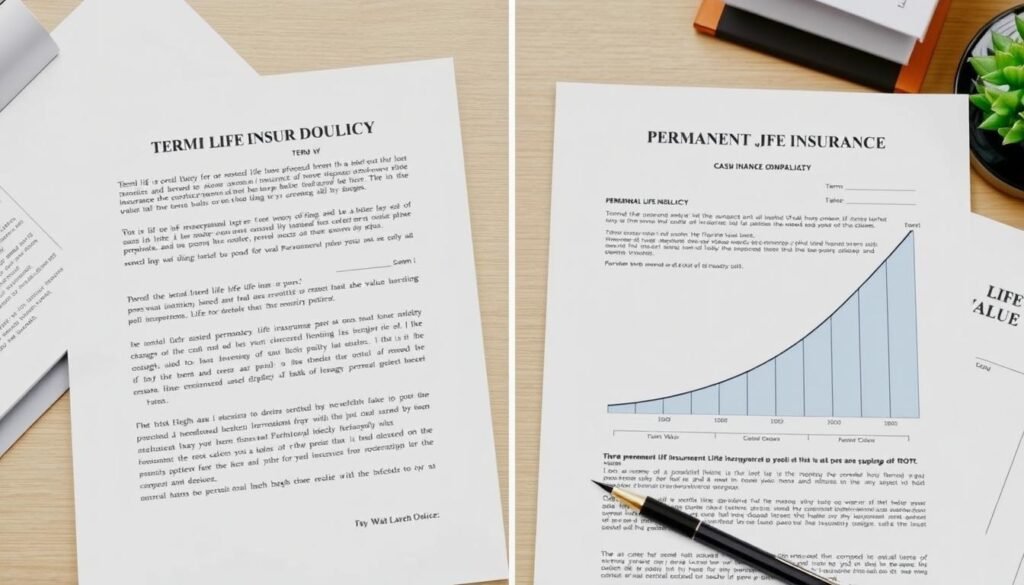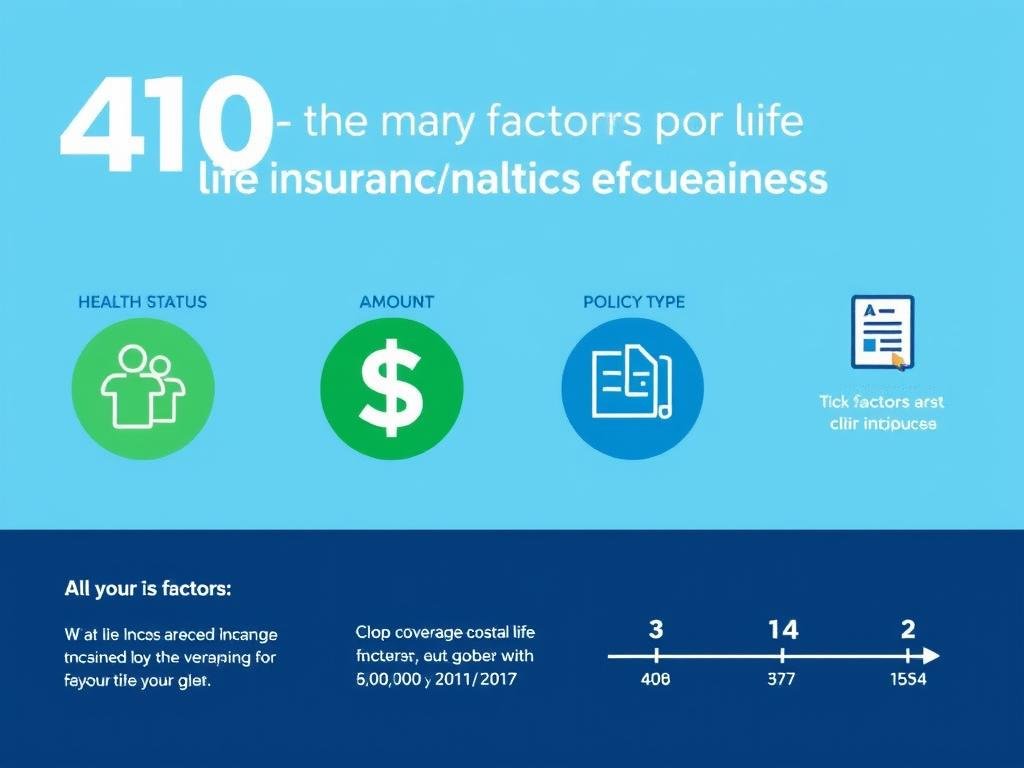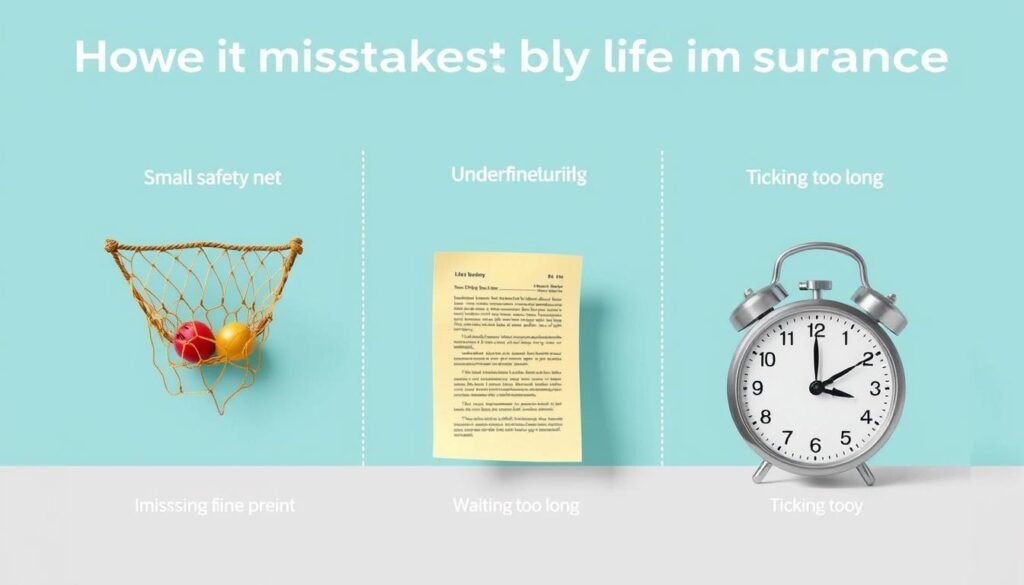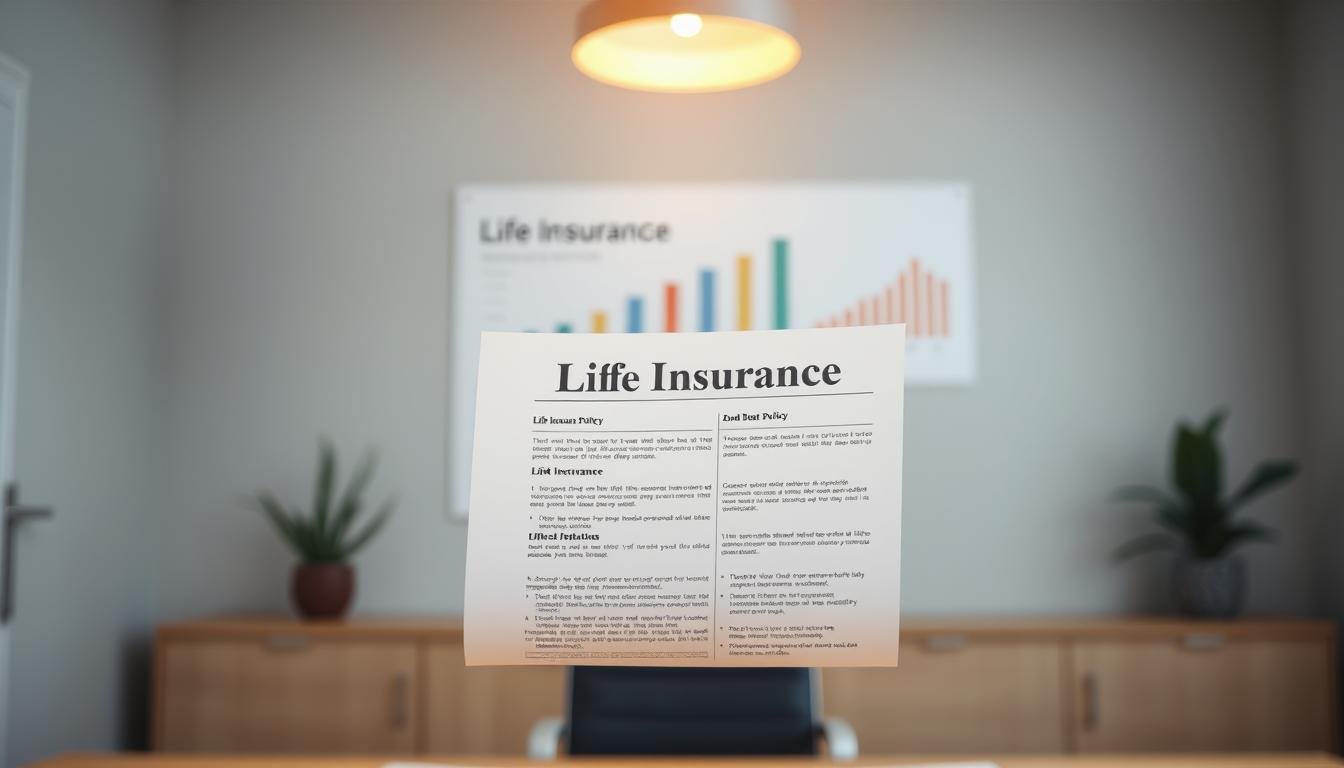Your 40s represent a critical time for life insurance planning. With peak earning years ahead but growing financial responsibilities, securing the right coverage now can protect your loved ones and provide peace of mind. Whether you’re revisiting an existing policy or exploring options for the first time, this guide will help you navigate the complex world of life insurance during this pivotal decade.
The decisions you make about life insurance in your 40s can have lasting impacts on your family’s financial security. With premiums still relatively affordable and a wide range of options available, now is the ideal time to secure coverage that aligns with your current needs and future goals.
Why Life Insurance Matters in Your 40s
Your 40s often bring a unique combination of financial responsibilities and opportunities. It’s typically a time when your career is established, but your financial obligations may be at their peak. Here’s why life insurance is particularly important during this decade:
“The biggest mistake I see with clients in their 40s is underestimating how much coverage they need. At this stage of life, your financial responsibilities are often at their highest, but you still have time to secure affordable rates.”
Term vs. Permanent Life Insurance: Making the Right Choice

The debate between term and permanent life insurance is particularly relevant for people in their 40s. Each option has distinct advantages depending on your financial goals and family situation.
Term Life Insurance
Permanent Life Insurance
Real-Life Scenario: Making the Choice
Sarah, 42, chose a 20-year term policy to cover her mortgage and children’s college expenses. The $750,000 policy costs her $45 monthly. Meanwhile, Michael, 47, opted for a permanent policy with a $250,000 death benefit and cash value component to supplement his retirement planning, paying $320 monthly.
Smart Strategy: Many financial advisors recommend a “laddering” approach for people in their 40s. This involves purchasing multiple term policies with different end dates to match your decreasing insurance needs as you age and pay down debts.
Understanding Life Insurance Costs in Your 40s

Life insurance premiums in your 40s are influenced by several key factors. Understanding these can help you secure the most affordable rates for your situation.
Primary Factors Affecting Your Premiums
Sample Monthly Premium Rates for 40-49 Year Olds
| Age & Gender | $250,000 Term (20yr) | $500,000 Term (20yr) | $1,000,000 Term (20yr) |
| 40-Year-Old Male (Non-Smoker) | $21-31 | $34-55 | $61-104 |
| 40-Year-Old Female (Non-Smoker) | $19-26 | $30-44 | $53-81 |
| 45-Year-Old Male (Non-Smoker) | $32-45 | $58-85 | $110-160 |
| 45-Year-Old Female (Non-Smoker) | $28-38 | $50-70 | $95-135 |
| 49-Year-Old Male (Non-Smoker) | $45-65 | $85-120 | $160-230 |
| 49-Year-Old Female (Non-Smoker) | $38-55 | $70-100 | $135-190 |
Note: These rates are estimates based on individuals in excellent health. Your actual rates may vary based on your specific health profile, the insurance company, and other factors. Smokers can expect to pay 2-3 times these rates.
Find Your Best Life Insurance Rates Today
Compare personalized quotes from top-rated insurance companies to find the best coverage for your needs.
or call (888) 123-4567 to speak with a licensed agent
5 Actionable Tips for Securing Affordable Life Insurance in Your 40s

Buy Sooner Rather Than Later
Every year matters in your 40s. Premiums increase approximately 8-10% for each year you age. Purchasing a policy at 40 versus 45 could save you thousands over the life of the policy.
Improve Your Health Metrics
Most insurers will require a medical exam. Taking steps to improve key health metrics 6-12 months before applying can significantly lower your rates. Focus on blood pressure, cholesterol, BMI, and blood sugar levels.
Compare Multiple Providers
Different insurance companies have different underwriting criteria. What might be a red flag for one company could be acceptable to another. Working with an independent agent who can shop multiple providers can save you 15-30% on premiums.
Consider a Laddering Strategy
Instead of one large policy, consider multiple smaller policies with different term lengths. For example, you might get a 10-year policy for $500,000, a 20-year policy for $300,000, and a 30-year policy for $200,000. This approach can save you up to 50% compared to a single $1 million 30-year policy.
Take Advantage of Group Rates
Check if your employer offers supplemental life insurance beyond the basic coverage. These group policies often don’t require medical exams and can be significantly cheaper than individual policies, especially if you have health concerns.
Case Study: How Mark Saved $1,320 Annually
Mark, 43, initially received a quote of $210 monthly for a $1 million, 20-year term policy. After improving his health metrics (losing 15 pounds and reducing his blood pressure) and shopping with multiple providers, he secured the same coverage for $100 monthly—saving $1,320 annually or $26,400 over the policy term.
3 Common Mistakes to Avoid When Buying Life Insurance in Your 40s

1. Underestimating Your Coverage Needs
Many people in their 40s significantly underestimate how much coverage they need. A common rule of thumb is 10-15 times your annual income, but this may not account for specific debts, education costs, or other financial obligations. Use a comprehensive life insurance calculator that factors in all your financial responsibilities.
2. Ignoring Important Riders and Policy Features
Policy riders can provide valuable additional coverage for specific situations. In your 40s, consider riders like:
3. Focusing Only on Premium Cost
While affordability is important, choosing a policy based solely on the lowest premium can be a costly mistake. Consider the financial strength of the insurance company (look for A+ ratings from AM Best), policy flexibility, conversion options, and customer service reputation. A slightly higher premium may provide significantly better value and peace of mind.
No-Exam Life Insurance Options for 40-49 Year Olds

No-exam life insurance has become increasingly popular, especially for busy professionals in their 40s. These policies allow you to skip the medical exam, making the application process faster and more convenient.
Types of No-Exam Policies Available
Simplified Issue Life Insurance
Requires answering health questions but no physical exam. Coverage typically ranges from $25,000 to $500,000. Approval can be as quick as 24-48 hours. Premiums are about 15-30% higher than fully underwritten policies.
Guaranteed Issue Life Insurance
No health questions or exams, but coverage is limited (usually $25,000 or less) and premiums are significantly higher. These policies often have a 2-3 year graded death benefit period. Best for those with serious health conditions.
Top Providers for No-Exam Coverage in Your 40s
| Company | Maximum Coverage | Age Range | Approval Time | Special Features |
| Sagicor | $1,000,000 | 18-65 | Minutes to days | Fully online application |
| SBLI | $500,000 | 18-60 | 1-3 days | Accelerated death benefit |
| Foresters | $400,000 | 18-80 | 2-5 days | Member benefits included |
| Mutual of Omaha | $300,000 | 18-65 | 24-48 hours | Terminal illness rider |
Is No-Exam Right for You? While convenient, no-exam policies typically cost more than traditional policies. They’re best for people who need coverage quickly, have mild health issues, or strongly prefer to avoid medical exams. If you’re in good health, a traditional policy will usually offer better rates.
Securing Life Insurance With Pre-Existing Conditions

Many people in their 40s have developed health conditions that can complicate life insurance applications. However, having a pre-existing condition doesn’t mean you can’t get coverage—it just requires a more strategic approach.
Common Conditions and Their Impact
| Condition | Potential Impact | Tips for Better Rates |
| Type 2 Diabetes | Rate increase of 50-150% | Demonstrate good control with A1C below 7.0 |
| High Blood Pressure | Rate increase of 20-50% | Maintain readings below 140/90 with medication |
| High Cholesterol | Rate increase of 20-50% | Keep total cholesterol below 240 and ratio below 5.0 |
| Anxiety/Depression | Rate increase of 0-50% | Show stable treatment with no hospitalizations |
| Sleep Apnea | Rate increase of 20-50% | Demonstrate CPAP compliance and follow-up |
Strategies for Success
“I was diagnosed with Type 2 diabetes at 42 and thought I couldn’t get affordable coverage. By working with a specialized agent and demonstrating good control for a year, I qualified for a standard rate with only a 35% premium increase instead of being declined.”
Ready to Secure Your Family’s Financial Future?
Get personalized life insurance quotes tailored to your specific needs and budget.
Compare Life Insurance Quotes Now
or call (888) 123-4567 for expert guidance
Frequently Asked Questions About Life Insurance for 40-49 Year Olds

How much life insurance coverage do I need at 45?
At 45, your coverage needs depend on your specific financial obligations. A general guideline is 10-15 times your annual income, but you should also consider:
- Outstanding mortgage balance
- Other debts (auto loans, credit cards, etc.)
- Children’s future education costs
- Income replacement for your family
- Final expenses
For example, if you earn ,000 annually, have a 0,000 mortgage, ,000 in other debts, and two children who will need 0,000 each for college, you might need at least
Frequently Asked Questions About Life Insurance for 40-49 Year Olds

How much life insurance coverage do I need at 45?
At 45, your coverage needs depend on your specific financial obligations. A general guideline is 10-15 times your annual income, but you should also consider:
- Outstanding mortgage balance
- Other debts (auto loans, credit cards, etc.)
- Children’s future education costs
- Income replacement for your family
- Final expenses
For example, if you earn $80,000 annually, have a $250,000 mortgage, $50,000 in other debts, and two children who will need $100,000 each for college, you might need at least $1,200,000 in coverage. Use a comprehensive life insurance calculator for a more precise estimate.
Can I get insured with pre-existing conditions?
Yes, many people with pre-existing conditions can still get life insurance, though you may pay higher premiums. The impact depends on the specific condition, its severity, how well it’s managed, and when you were diagnosed.
Some strategies for success include:
- Working with an independent agent who specializes in high-risk cases
- Applying with companies known to be more lenient with your specific condition
- Providing detailed medical records showing good management
- Considering guaranteed issue or graded benefit policies if traditional coverage isn’t available
Even serious conditions like diabetes, heart disease, or cancer in remission don’t automatically disqualify you from coverage.
Is it worth converting term to permanent life insurance later?
Converting a term policy to permanent coverage can be valuable in certain situations, particularly if:
- Your health has declined, making new coverage expensive or unavailable
- You’ve developed a need for lifelong coverage (estate planning, permanent dependents)
- You want to build cash value for supplemental retirement income
- You want to lock in insurability regardless of future health changes
The main drawback is cost—permanent insurance premiums are significantly higher than term. However, many term policies allow conversion without a new medical exam, which can be valuable if your health deteriorates. Consider converting only the amount of permanent coverage you truly need, rather than the entire term policy.
What’s the difference between whole life and universal life insurance?
Both whole life and universal life are permanent policies, but they differ in flexibility and structure:
Whole Life:
- Fixed premiums that never change
- Guaranteed cash value growth at a predetermined rate
- Potential dividends (if from a mutual company)
- More predictable but less flexible
Universal Life:
- Flexible premiums (can increase or decrease within limits)
- Adjustable death benefits
- Cash value growth tied to interest rates or market performance (depending on type)
- More flexibility but potentially more risk
For most people in their 40s seeking permanent coverage, whole life offers more certainty, while universal life provides more flexibility to adjust as your financial situation changes.
How does my occupation affect my life insurance rates?
Your occupation can significantly impact your life insurance rates, especially in your 40s when you’re likely established in your career. Insurance companies classify occupations based on risk:
Low-risk occupations (office workers, teachers) typically receive standard rates.
Moderate-risk occupations (construction, manufacturing) may see slight rate increases.
High-risk occupations (pilots, offshore oil workers, loggers) can face substantial surcharges or even coverage limitations.
If you work in a high-risk occupation, shop around—different insurers have different risk assessments for specific jobs. Some companies specialize in covering certain professions and offer more competitive rates.
Should I consider return of premium (ROP) term life insurance?
Return of premium (ROP) policies refund all or most of your premiums if you outlive the term. For people in their 40s, this can be appealing since you’re likely to outlive a 20-year term.
Pros:
- Get your money back if you outlive the policy
- Forces disciplined saving
- Peace of mind knowing you’ll either have coverage or get premiums returned
Cons:
- Premiums are 2-3 times higher than standard term
- Money is locked in for the entire term
- No interest earned on returned premiums
- May be better to buy standard term and invest the difference
For most people, buying a standard term policy and investing the premium difference will yield better returns than an ROP policy. However, if you value the guaranteed return and forced savings aspect, ROP might be worth considering.
,200,000 in coverage. Use a comprehensive life insurance calculator for a more precise estimate.
Can I get insured with pre-existing conditions?
Yes, many people with pre-existing conditions can still get life insurance, though you may pay higher premiums. The impact depends on the specific condition, its severity, how well it’s managed, and when you were diagnosed.
Some strategies for success include:
- Working with an independent agent who specializes in high-risk cases
- Applying with companies known to be more lenient with your specific condition
- Providing detailed medical records showing good management
- Considering guaranteed issue or graded benefit policies if traditional coverage isn’t available
Even serious conditions like diabetes, heart disease, or cancer in remission don’t automatically disqualify you from coverage.
Is it worth converting term to permanent life insurance later?
Converting a term policy to permanent coverage can be valuable in certain situations, particularly if:
- Your health has declined, making new coverage expensive or unavailable
- You’ve developed a need for lifelong coverage (estate planning, permanent dependents)
- You want to build cash value for supplemental retirement income
- You want to lock in insurability regardless of future health changes
The main drawback is cost—permanent insurance premiums are significantly higher than term. However, many term policies allow conversion without a new medical exam, which can be valuable if your health deteriorates. Consider converting only the amount of permanent coverage you truly need, rather than the entire term policy.
What’s the difference between whole life and universal life insurance?
Both whole life and universal life are permanent policies, but they differ in flexibility and structure:
Whole Life:
- Fixed premiums that never change
- Guaranteed cash value growth at a predetermined rate
- Potential dividends (if from a mutual company)
- More predictable but less flexible
Universal Life:
- Flexible premiums (can increase or decrease within limits)
- Adjustable death benefits
- Cash value growth tied to interest rates or market performance (depending on type)
- More flexibility but potentially more risk
For most people in their 40s seeking permanent coverage, whole life offers more certainty, while universal life provides more flexibility to adjust as your financial situation changes.
How does my occupation affect my life insurance rates?
Your occupation can significantly impact your life insurance rates, especially in your 40s when you’re likely established in your career. Insurance companies classify occupations based on risk:
Low-risk occupations (office workers, teachers) typically receive standard rates.
Moderate-risk occupations (construction, manufacturing) may see slight rate increases.
High-risk occupations (pilots, offshore oil workers, loggers) can face substantial surcharges or even coverage limitations.
If you work in a high-risk occupation, shop around—different insurers have different risk assessments for specific jobs. Some companies specialize in covering certain professions and offer more competitive rates.
Should I consider return of premium (ROP) term life insurance?
Return of premium (ROP) policies refund all or most of your premiums if you outlive the term. For people in their 40s, this can be appealing since you’re likely to outlive a 20-year term.
Pros:
- Get your money back if you outlive the policy
- Forces disciplined saving
- Peace of mind knowing you’ll either have coverage or get premiums returned
Cons:
- Premiums are 2-3 times higher than standard term
- Money is locked in for the entire term
- No interest earned on returned premiums
- May be better to buy standard term and invest the difference
For most people, buying a standard term policy and investing the premium difference will yield better returns than an ROP policy. However, if you value the guaranteed return and forced savings aspect, ROP might be worth considering.
Taking Action: Next Steps for Securing Life Insurance in Your 40s

Securing the right life insurance coverage in your 40s is one of the most important financial decisions you’ll make. It provides protection during your peak financial responsibility years while rates are still relatively affordable.
“The peace of mind that comes from knowing my family is protected, no matter what happens to me, is worth far more than the monthly premium I pay. It’s one of the best financial decisions I’ve made in my 40s.”
Ready to Protect What Matters Most?
Get personalized quotes from top-rated insurance companies and find the perfect coverage for your needs.
or call (888) 123-4567 to speak with a licensed agent


